Carriage House Third Floor
The Third floor of Poundmaker’s Lodge Carriage House. The Third Floor is the Most Internally Divided Space in the Carriage House and Includes a Large Classroom. A Mural Depicting a Mountain Range Adorns the Wall on the Other Side of the Classroom and Can Be Seen in the Point Cloud. Click on the triangle to load the point cloud.
“It has always been clear to me that the Indians must have some sort of recreation, and if our agents would endeavor to substitute reasonable amusements for this senseless drumming and dancing, it would be a great assistance.” – Duncan Campbell Scott 1921, Deputy Superintendent of Indian Affairs
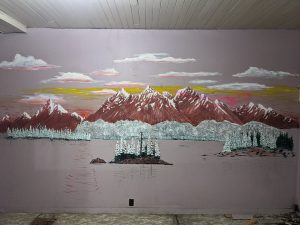
The third floor of the carriage house had a staff room, the coat room for students, and a teaching classroom. Today, this floor most resembles what the carriage house would have looked like when it was last in use; the staff’s quarters still feature a hand painted mural of the mountains; the classroom still has a chalkboard up with some writing from its last use visible; and the coatroom still features numbered hooks for students. When students came to the residential school, they were assigned a number which they would be referred to instead of a name. The students’ clothes from home, upon arrival, would be stuffed into a bag labelled with their number. In the playrooms of the main schoolhouse, there would also be a numbered hook for students’ coats and outside clothes to hang on when they were at the school. Many survivors today still remember the number they were assigned at their schools.
Staff stayed in this building because children lived on the top floor of the carriage house. Students attending residential schools were not given many freedoms and children were constantly supervised or kept under surveillance. Students would often be given severe punishments for any breach in what was deemed by a supervisor to be inappropriate behaviour, including staying up too late, being in the wrong place, and speaking out of turn or in their native languages.
Neglect and Food Insecurity
Staffing issues during the war years restricted farming activities at each school, resulting in food shortages that affected the children. Many students attending Blue Quills and Old Sun remarked on the disparity between the meals they received verses those served to staff. Jerry Wood from Saddle Lake First Nation explains:
“we used to walk by the priests’ dining room. You know, they had a nice white table cloth, polished silver, two candles, two bottles of wine with great food while we ate the garbage” (NCTR, Alberta National Event, Edmonton Sharing Circle, 2014).
In addition to malnutrition, issues surrounding kitchen sanitation and unsafe food preparation also placed student health at risk. The repurposing of kitchen equipment, a lack of proper refrigeration, and a failure to enforce basic standards for health and safety were all to blame.
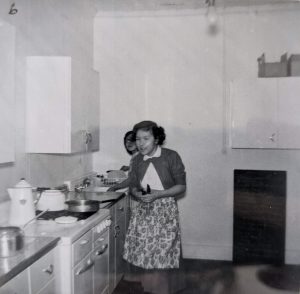
Students often came to residential schools around the age of 5 or 6, but sometimes even younger, and not speaking any English. Yet if they misspoke and tried to communicate in their own language, they would be often by physically punished. William McLean, a survivor who attended the Edmonton IRS starting in 1933, remembers that, “and we were never allowed to speak our own language inside the school building and inside the classroom. If we were caught speaking our language in the school or in the classroom we would get a strapping for it by the teachers or supervisors.”
In extreme circumstances, the students barricaded themselves into spaces together or individually at the school to protect themselves from abuse. Mel Buffalo recounted to the Commission a time when he and other students at EIRS collectively barred the dormitory doors with full dressers to block out the abusers at night [4].
For obvious reasons, the administrative records of the Department of Indian Affairs do not explicitly detail neglect or abuse of the children in the residential school system; however, this is implicit in the way that staffing, the availability of food, punishments, and labour are discussed throughout various documents.
Food insecurity plagued students at all three schools. The excessive expense of staple items like milk was often cited by officials in the Department of Indian Affairs as necessitating the farming of adjacent lands to offset the high costs of food. Such endeavors frequently relied on student labour even though every hour tending crops and livestock represented less time in the classroom. Outside of farming, children were often conscripted for hauling ice and water, constructing outbuildings, moving furniture, as well as performing other menial tasks.
The following virtual tour was created using panospheres from the Z+F 5010X laser scanner. Use your mouse or arrow keys to explore each image. Click on an arrow to "jump" to the next location.
This image gallery shows historic and modern photos related to the third floor of the carriage house. Click on photos to expand and read their captions. If you have photos of the Edmonton IRS that you would like to submit to this archive, please contact us at irsdocumentationproject@gmail.com.

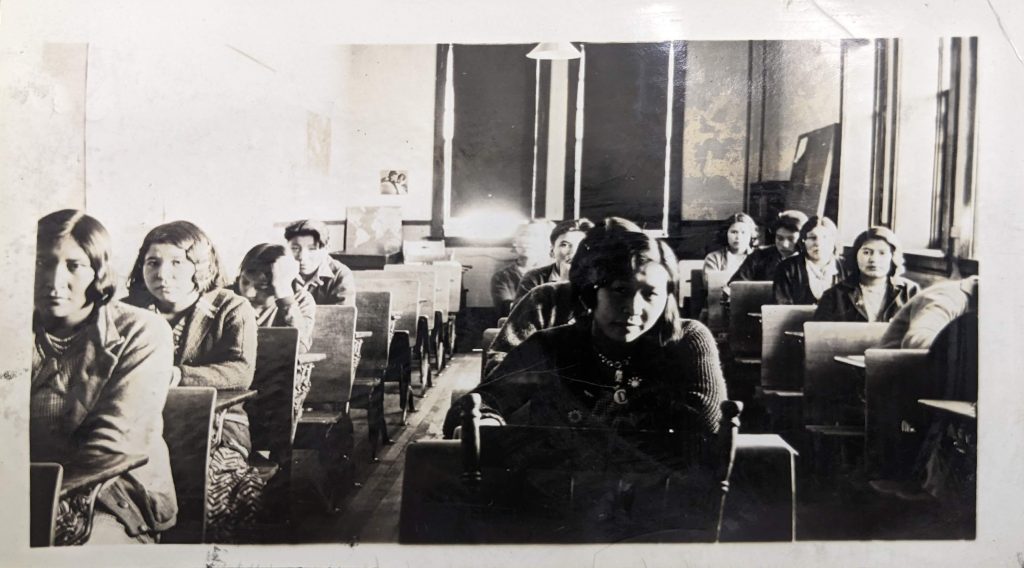
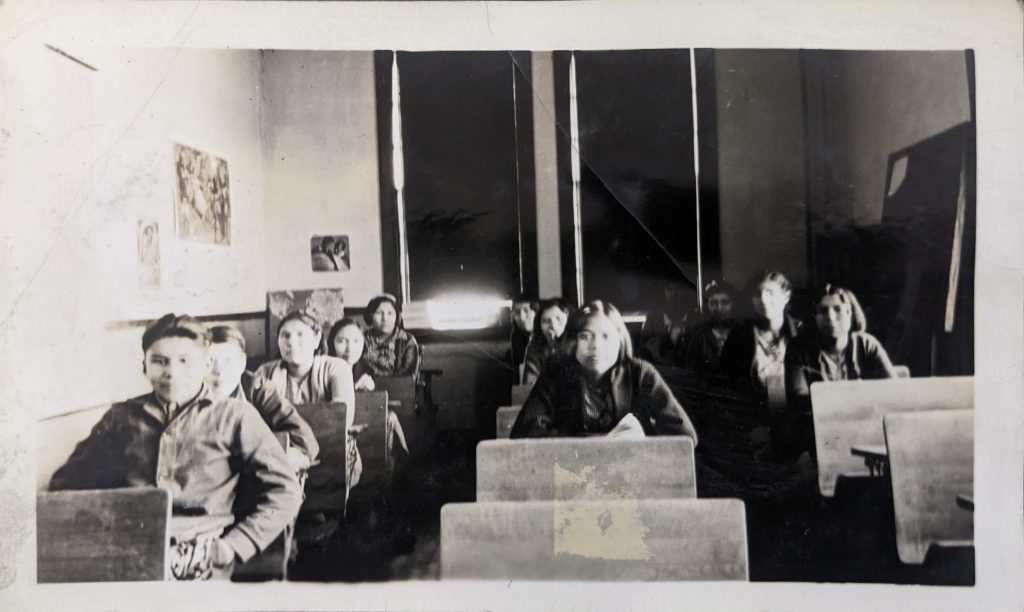
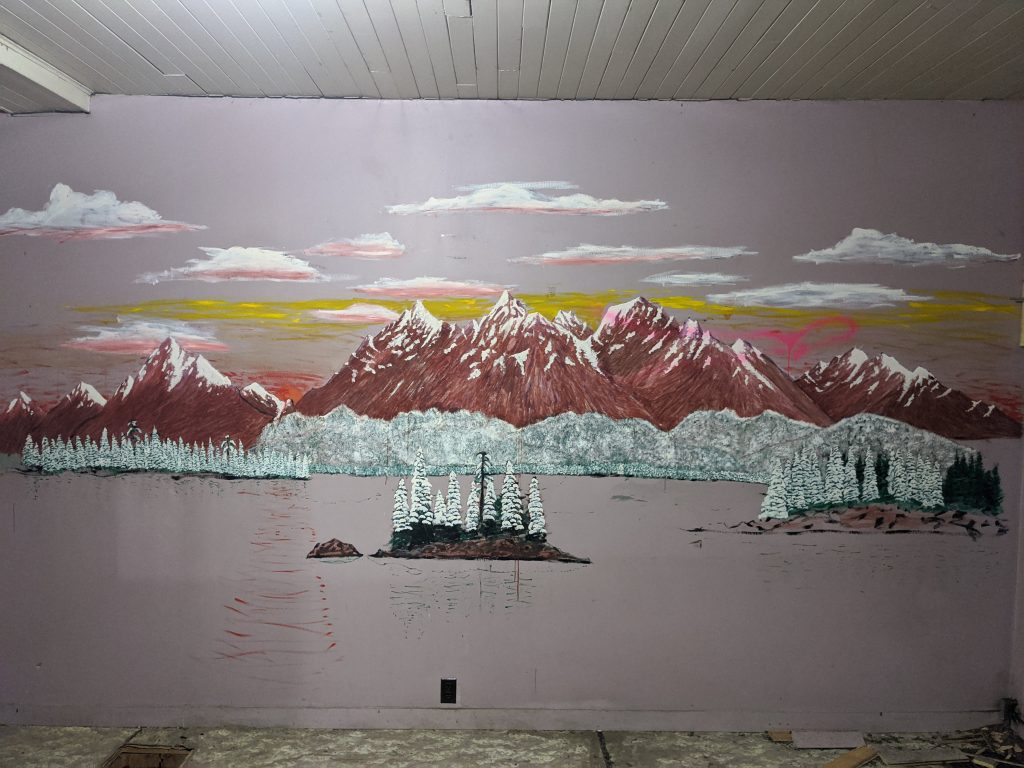
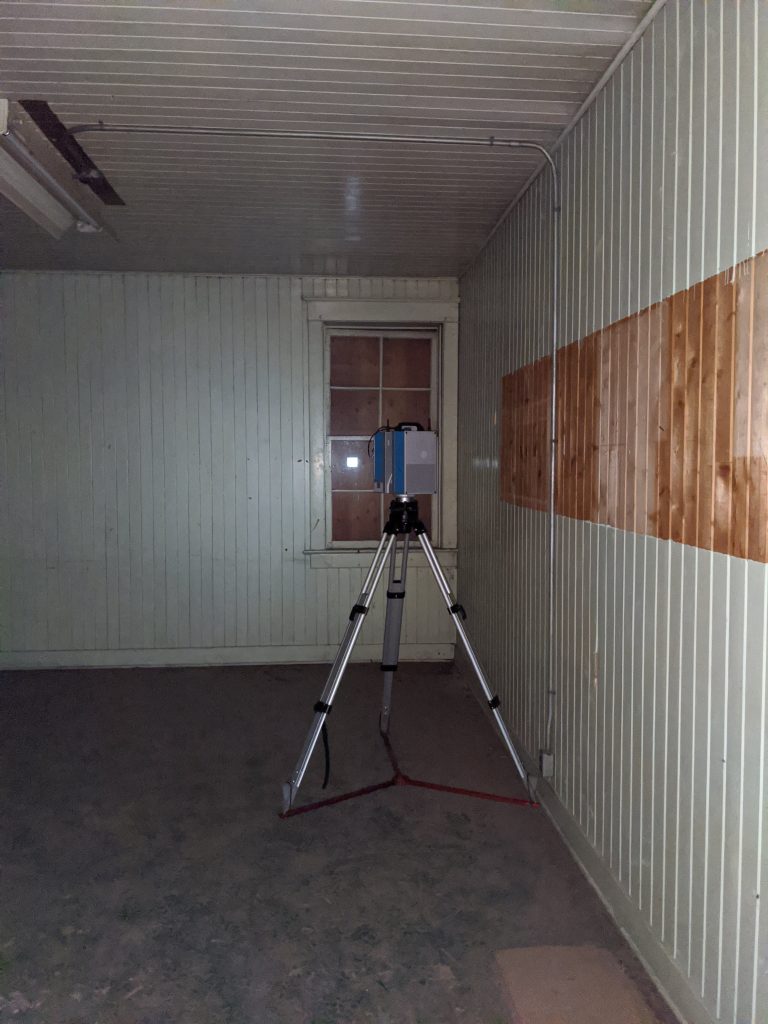
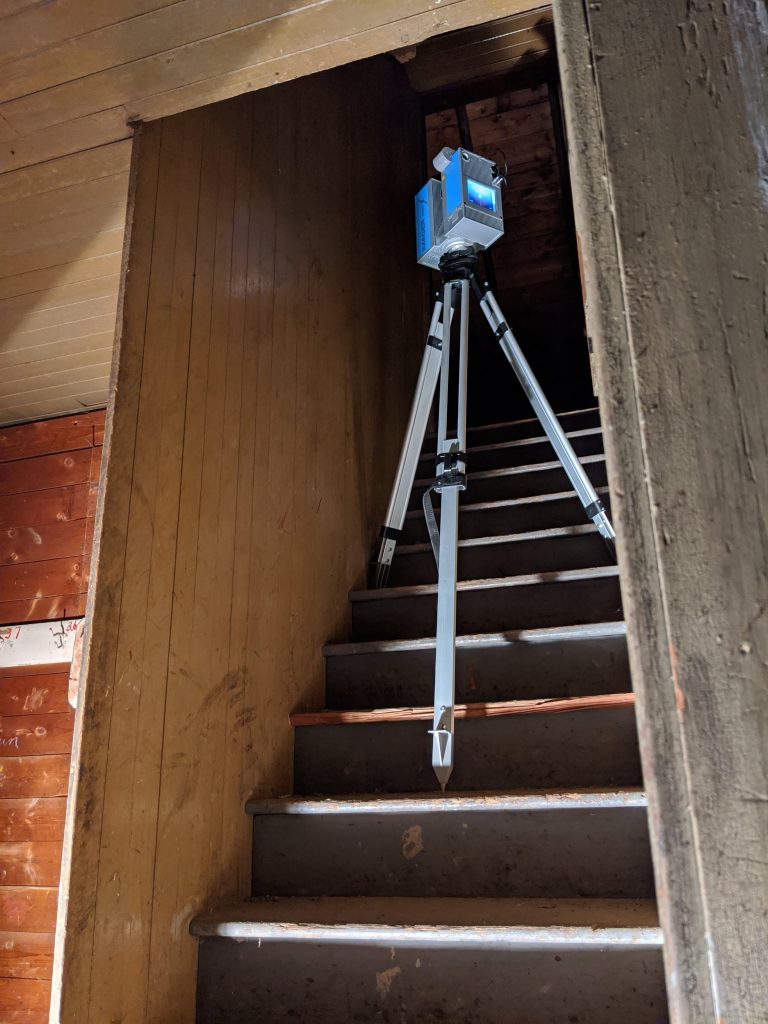
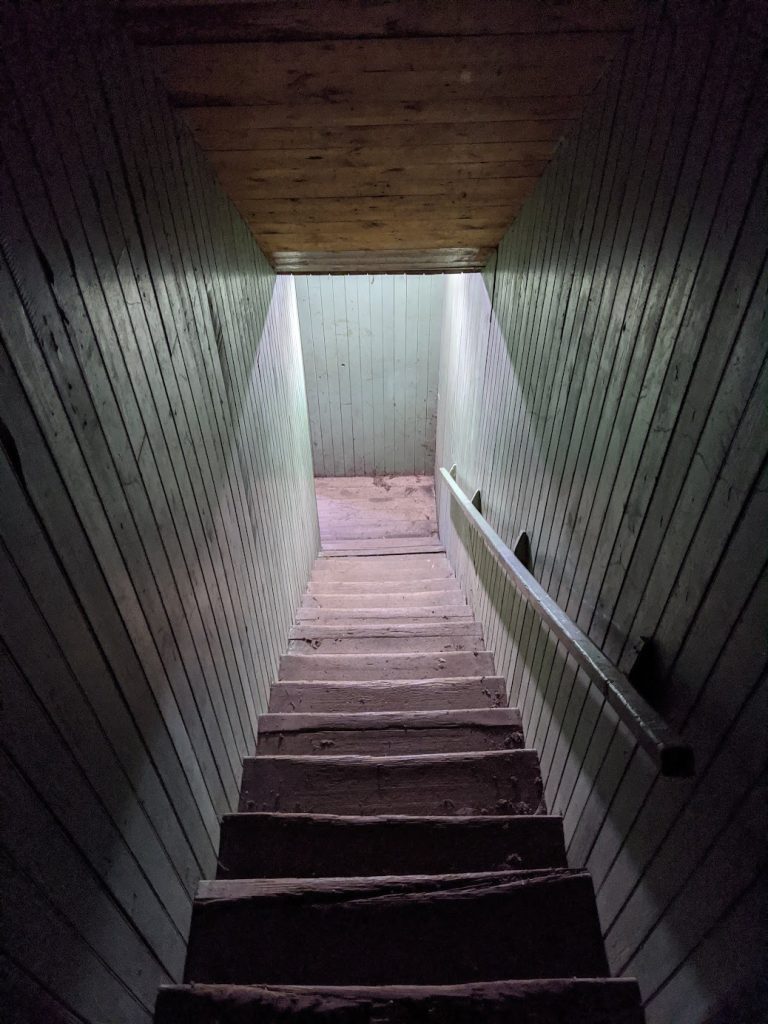
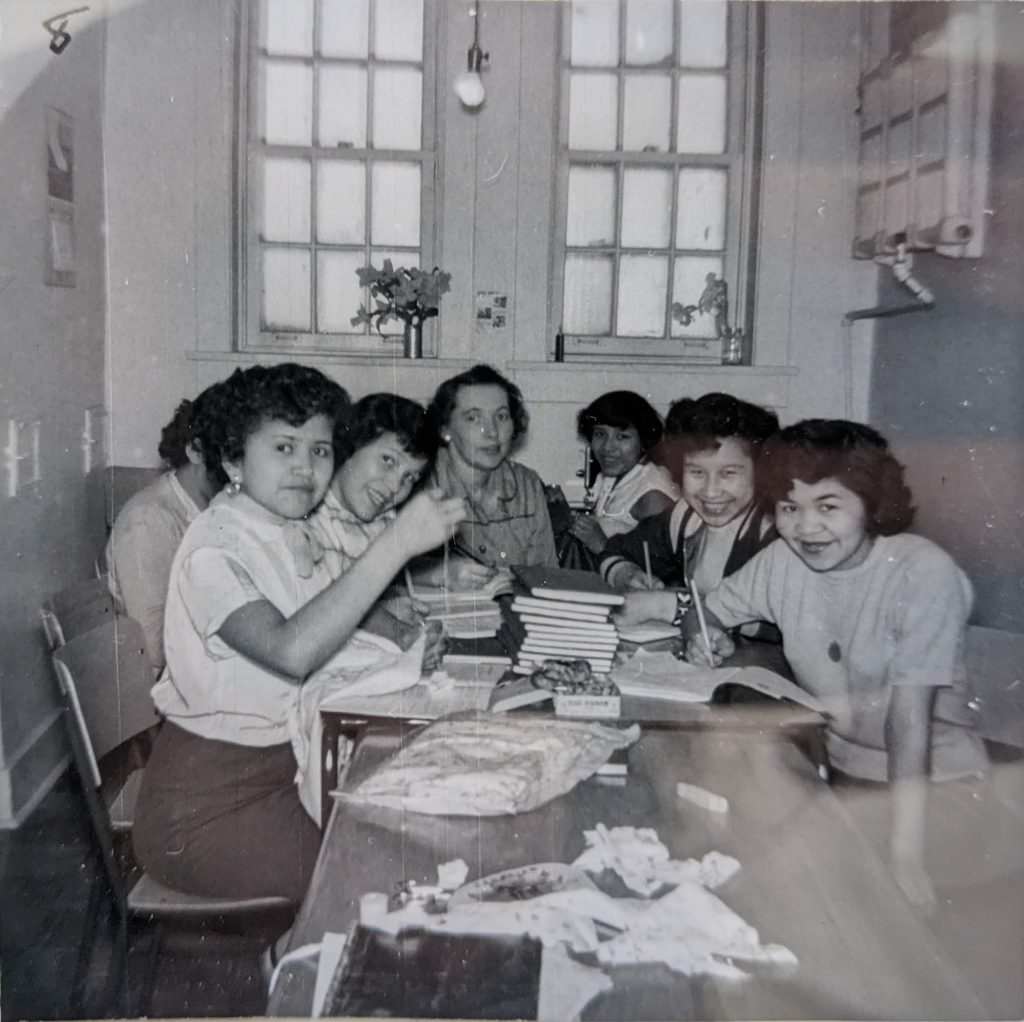
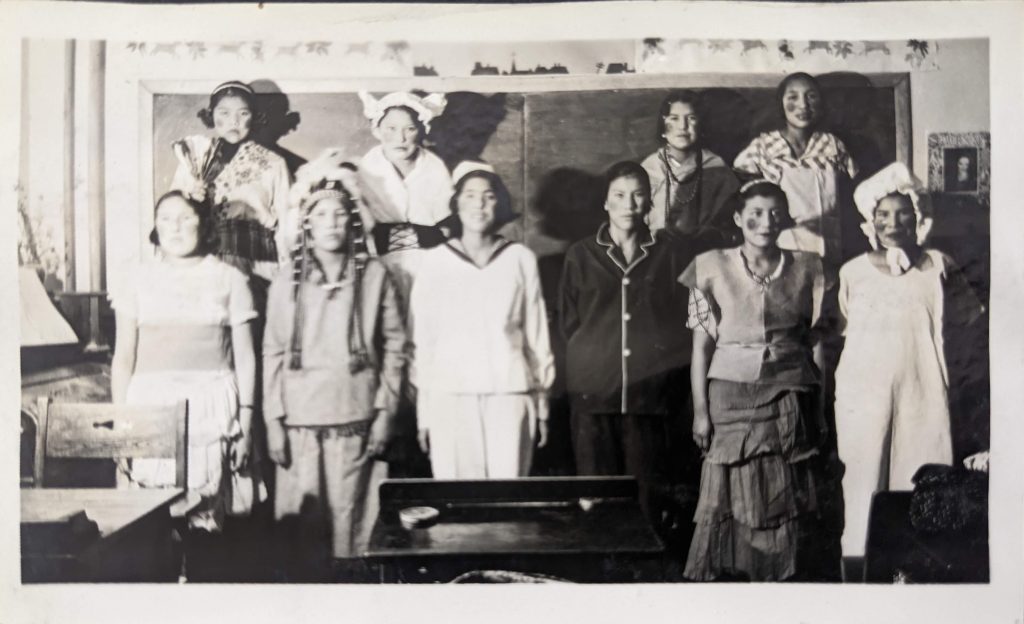
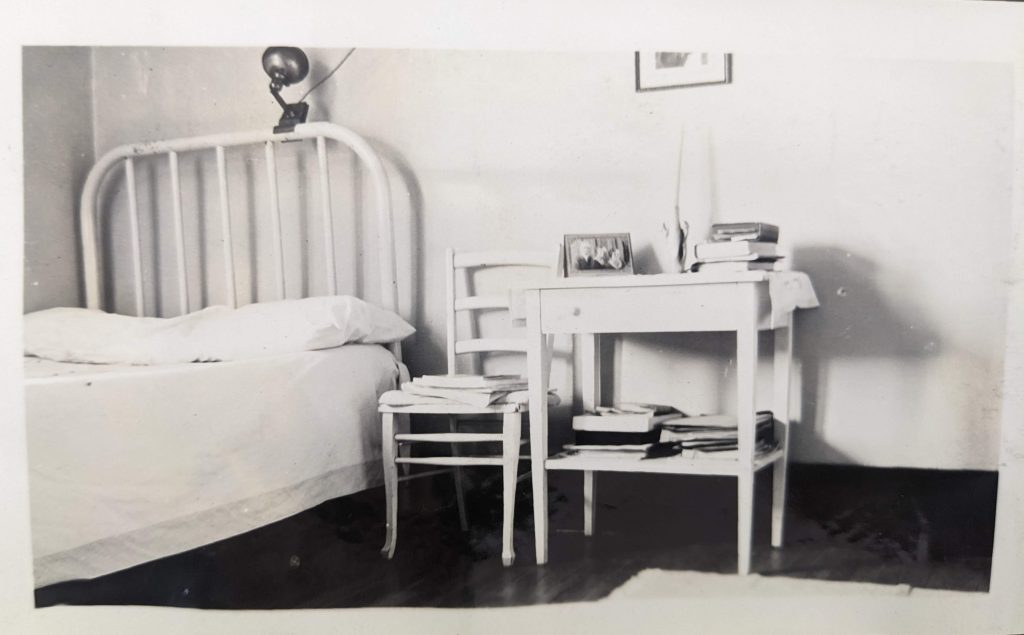
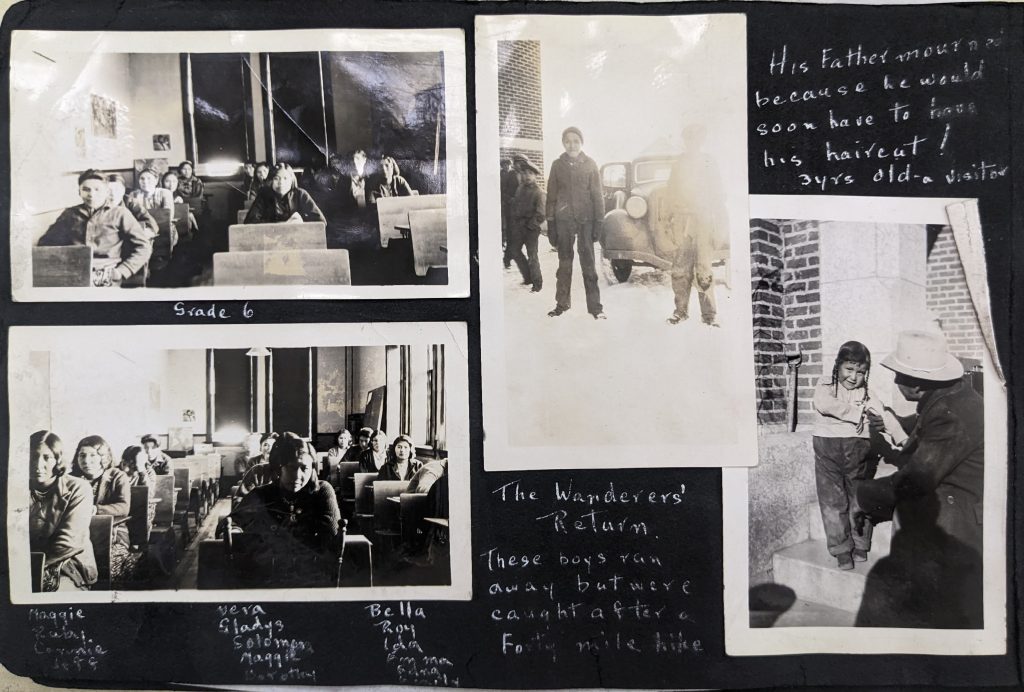
Laser scanning data can be used to create “as built” architectural plans which can support repair and restoration work to The Edmonton Indian Residential School Carriage House. The main school building was lost to fire in 2000. This plan was created using Autodesk Revit and forms part of a larger building information model (BIM) of the school. The Revit drawings and laser scanning data for this school are securely archived with access controlled by Poundmaker’s Lodge Treatment Center.
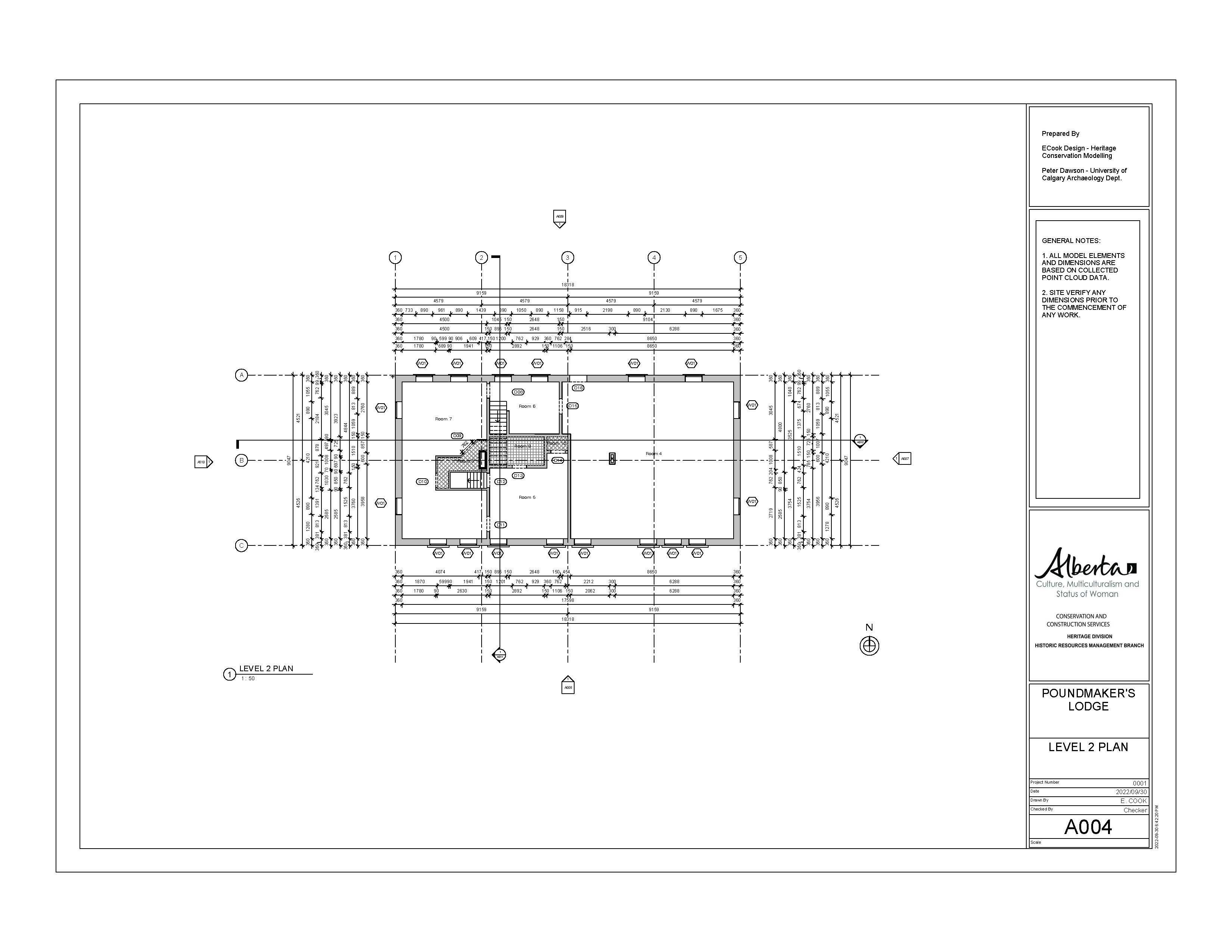
Isabell Muldoe- The Three-Day Train Ride
We’re from BC. Those of us that are sitting up here and there were many, many, many students from Haida Gwaii to the Gitxsan Nation that went to, that came to Edmonton to go to school here. I suppose we were brought here because the residential schools in British Columbia were full so they started shipping us out.
Our journey started from Prince Rupert, some of us were very, very young, and others were a bit older. We got on a train and this one supervisor that came from here to Edmonton on a train ride. He had boxes and boxes and boxes of lunch with him. In these big cardboard boxes, were our lunches. In this lunch were bologna sandwiches, peanut butter, and maybe an apple or an orange. Three days, he traveled from here to BC. to come and pick us up to be a supervisor on the train on the way back.
You know as well as I do that after three days, Bologna not sitting in a fridge turns green. That’s what was fed to us on a train, green bologna, and some of the children are hungry but I think that most, most of us probably ate just the peanut butter sandwich and got rid of the rest.
Some of us were fortunate enough to have money so whenever the train stopped somewhere, we’d jump off and go to a store if there was one close by. We buy a little bit of goodies and shared with those that didn’t, didn’t have money. The three-day train ride we didn’t have coaches to sleep in, back in those days in the early ‘50s. With the old trains they had these big luggage areas, they were so huge that you could actually climb up there and sleep there. And that’s where a lot of the young people and the older students slept, wherever you could see, we crowded in one, two boxes, two cars- the boys on one car and the girls on the other.
When we got to Edmonton, we were bused there from the train station, or no, actually, I think it might have been from Jasper. We were bused to the residential school. Again boys in one bus, and girls on the other, in another bus.
We got off in front of the school, we looked up at this big building, it was huge, because we were a little then. It was a huge building, you’ve seen pictures out there, and to us it was like we walked in there and we were just literally swallowed up in these buildings.
We got swallowed up and for the girls that’s where we stayed.
– Isabell Muldoe
Notes:
Isabell Muldoe Testimony. SP205_part06. Shared at Alberta National Event (ABNE) Sharing Panel. March 29, 2014. National Centre for Truth and Reconciliation holds copyright. https://archives.nctr.ca/SP205_part06

Explore Floors and Rooms
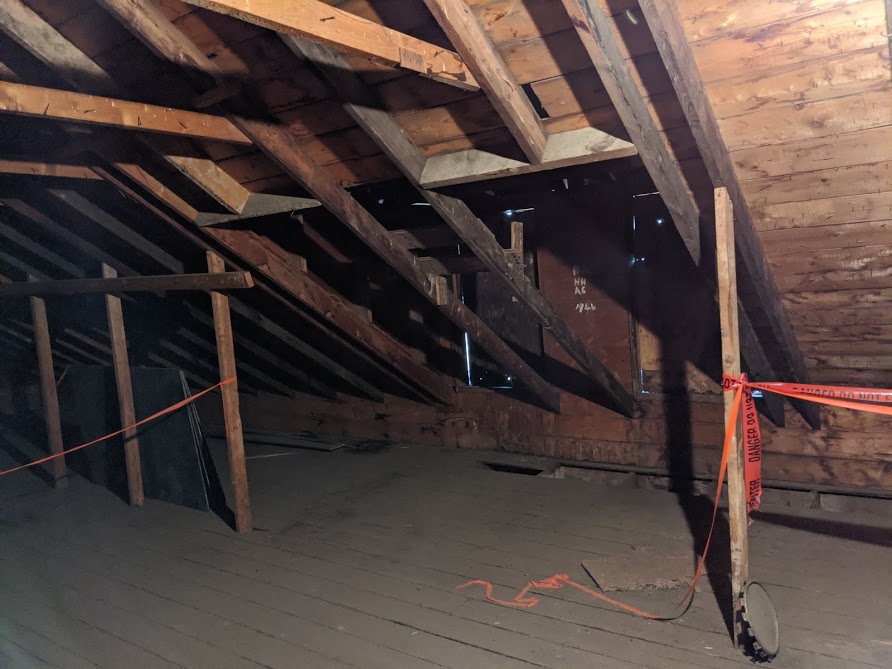
Carriage House Fourth Floor
The Fourth Floor/Attic of Poundmaker’s Lodge Carri…
Read more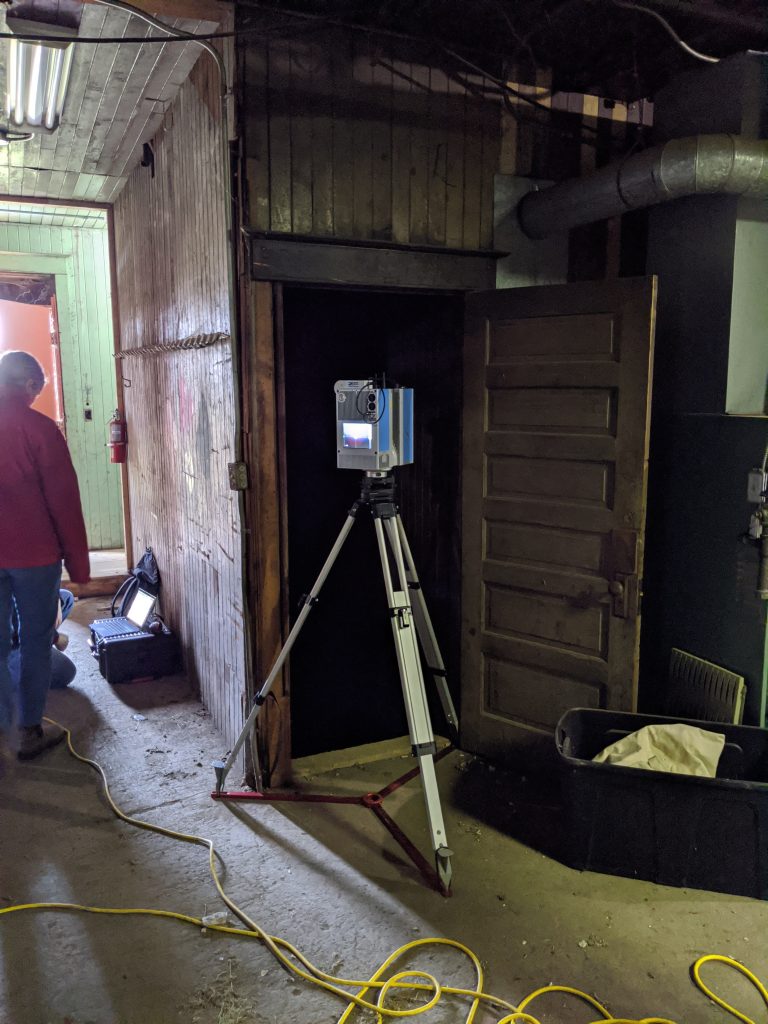
Carriage House Second Floor
The Second Floor/Main floor of Poundmaker’s Lodge…
Read more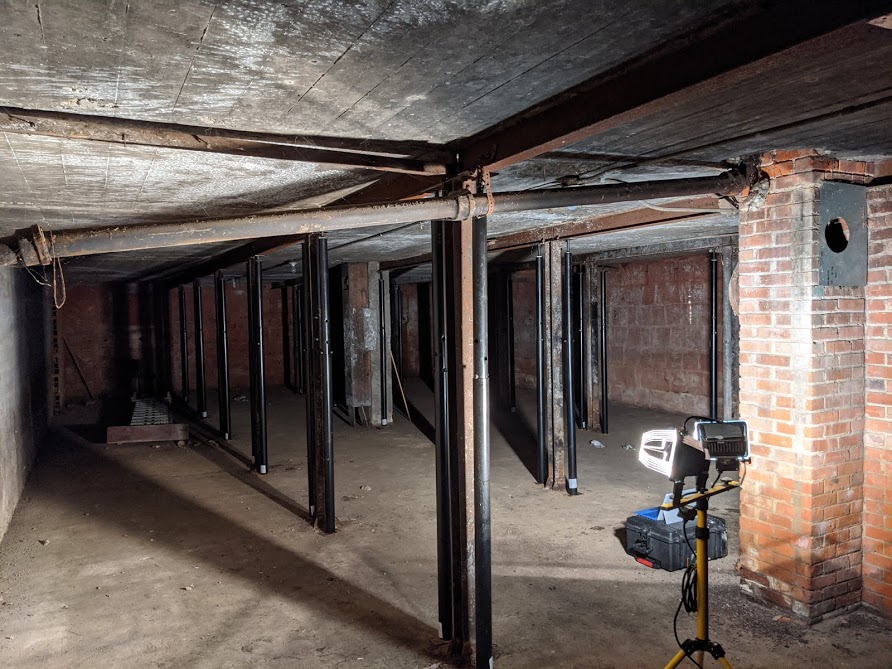
Carriage House First Floor
The First Floor/Basement of Poundmaker’s Lodge Car…
Read more
Carriage House Exterior
The Exterior of Poundmaker’s Lodge Carriage House….
Read more
